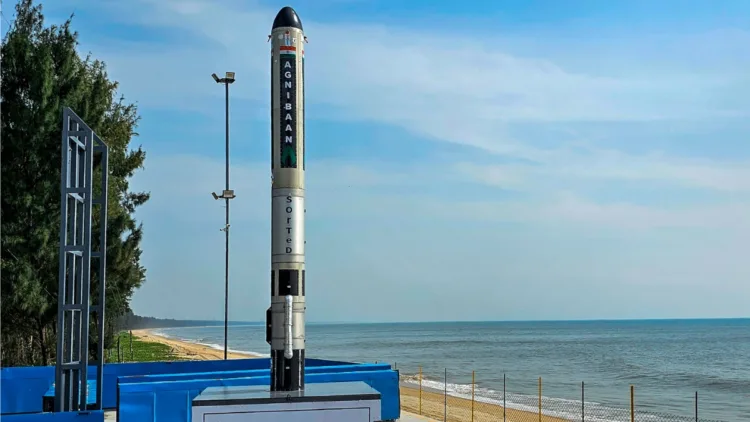IIT Madras incubated startup Agnikul Cosmos test launched the world’s first rocket with a single pieced 3D-printed engine from Sriharikota at 7:15 AM on May 30, 2024, which has been indigenously designed and developed. Agnibaan SORTED (Sub-Orbital Technology Demonstrator) was launched from India’s private launchpad Dhanush established by Agnikul. It is also the India’s first semi-cryogenic engine powered test rocket launched.
The key purpose of this mission, which is Agnikul’s first flight is to gather crucial flight data and ensure optimal functioning of systems for Agnikul’s orbital launch vehicle, the Agnibaan. The launch was witnessed by S Somanath Chairman of the ISRO, Pawan Goenka, the chairman of the IN-Space, India’s private Space regulator and A Rajarajan, director of the Satish Dhawan Space Centre (SDSC) Sriharikota.
According to the planned flight profile, the Agnibaan rocket will use thrust vectoring on its gimballed motors to control the vertical ascent reaching an altitude of eight kilometres before splashing into the Bay of Bengal about 30km away from the launch pad.
This is a test flight to evaluate the capabilities of the launch vehicle and there is no payload on the board. The rocket uses world’s first 3D printed Agnilet engine. This innovative engine can be used and produced within three days allowing Agnikul Cosmos to potentially provide on demand launches from anywhere.
The liftoff was followed by a slight pitch over manoeuvre in the initial part of the flight, followed by a wing biasing manoeuvre about 40 seconds from the launch. These manoeuvres were meant to test the control of the rockets including the autopilot. After about 70 seconds, the avionics were tested while the vehicle maintained its trajectory. The rocket then reached its apogee (highest time in flight) and after that it fell into the Bay of Bengal.
Prime Minister Narendra Modi said in a post on the microblogging site, X, “A remarkable feat which will make the entire nation proud. The successful launch of the Agnibaan rocket powered by the worlds first single 3D printed semi-cryogenic engine is a momentous occasion for India’s space sector and a testament to the remarkable ingenuity of our Yuva Shakti. My best wishes to the Agnikul Cosmos team for their future endeavours.”
ISRO Charman S Somanath said, “The successful launch of the Agnibaan SORTED involves India’s firsts including 3D-printed semi-cryogenic engine and flight control systems that demonstrate the prowess of indigenous design and innovation.” Agnibaan can be configured to accommodate payloads from 30kg to 300kg.
Pawan Goenka, the Chairman of IN-Space said, “The successful launch of the Agnibaan SORTED marks a significant moment for private players who are contributing to India’s growing space sector with cutting edge technology such as the world’s first 3D printed semi-cryogenic engine.” Agnikul is developing launch vehicles that are both affordable and customisable according to customer needs.
“India’s first semi-cryogenic engine (rocket engine) is also the world’s most integrated single shot 3D printed engine. It signals the ability to rapidly resemble the rockets said Professor Satyanarayan R Chakravarthy, founding advisor of Agnikul Cosmos. The startup team comprises 200 engineers and is associated with the National Centre for Combustion and Research and Development at IIT Madras. Additionally, the team is guided by 45 former scientists from ISRO.
















Comments